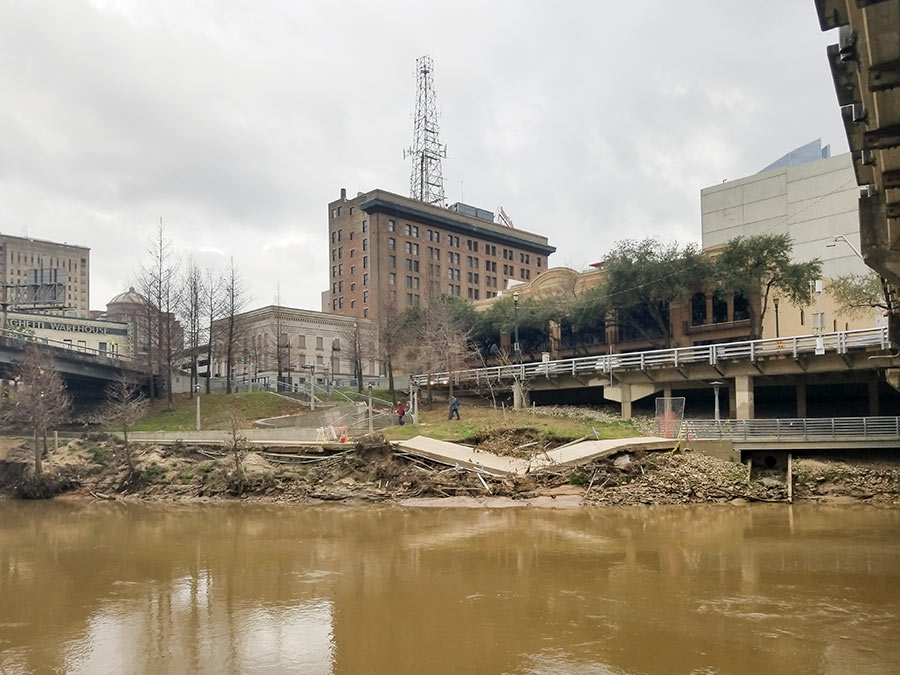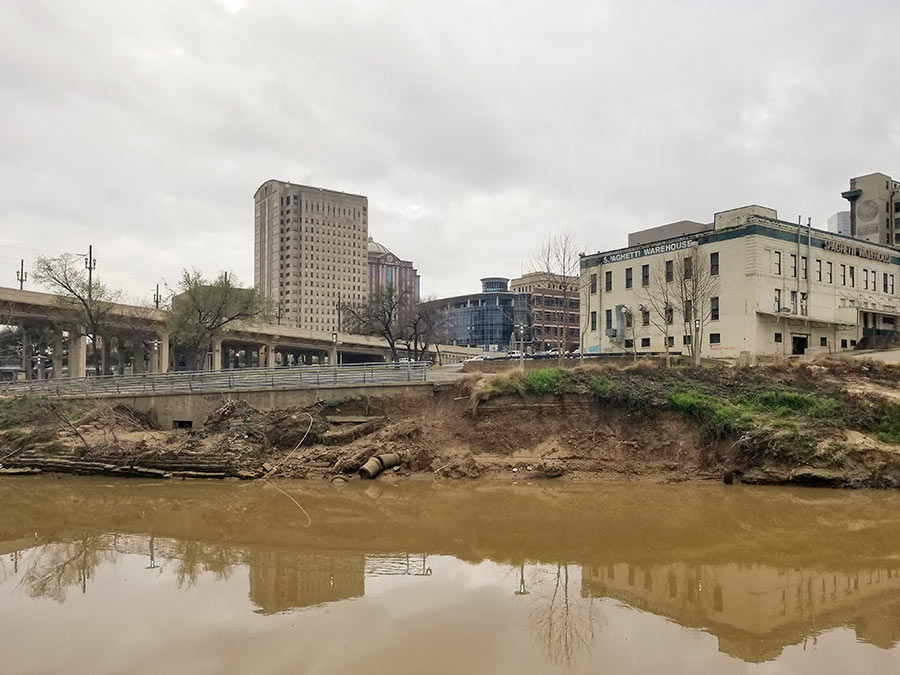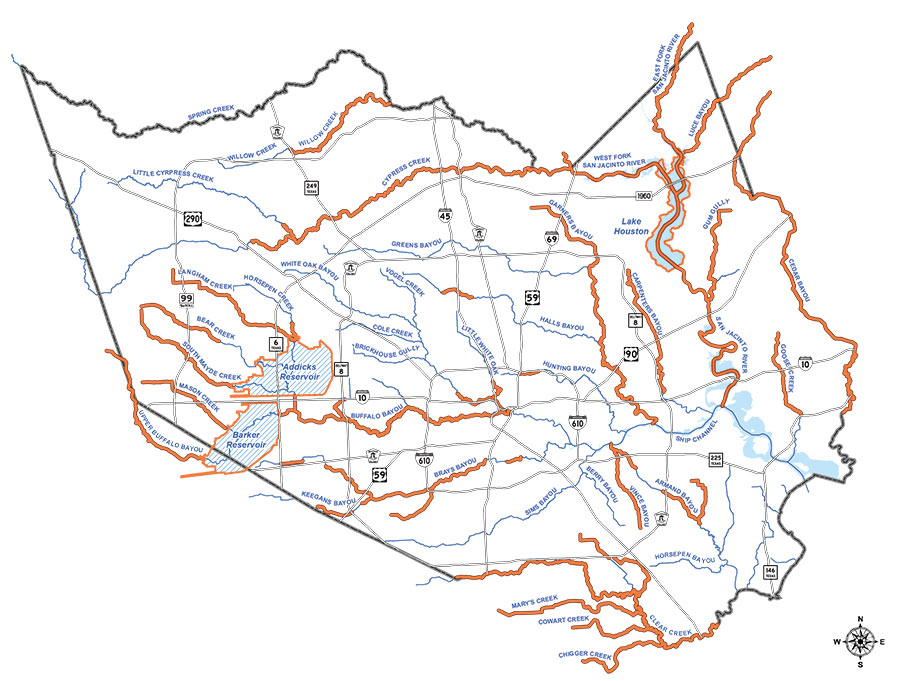
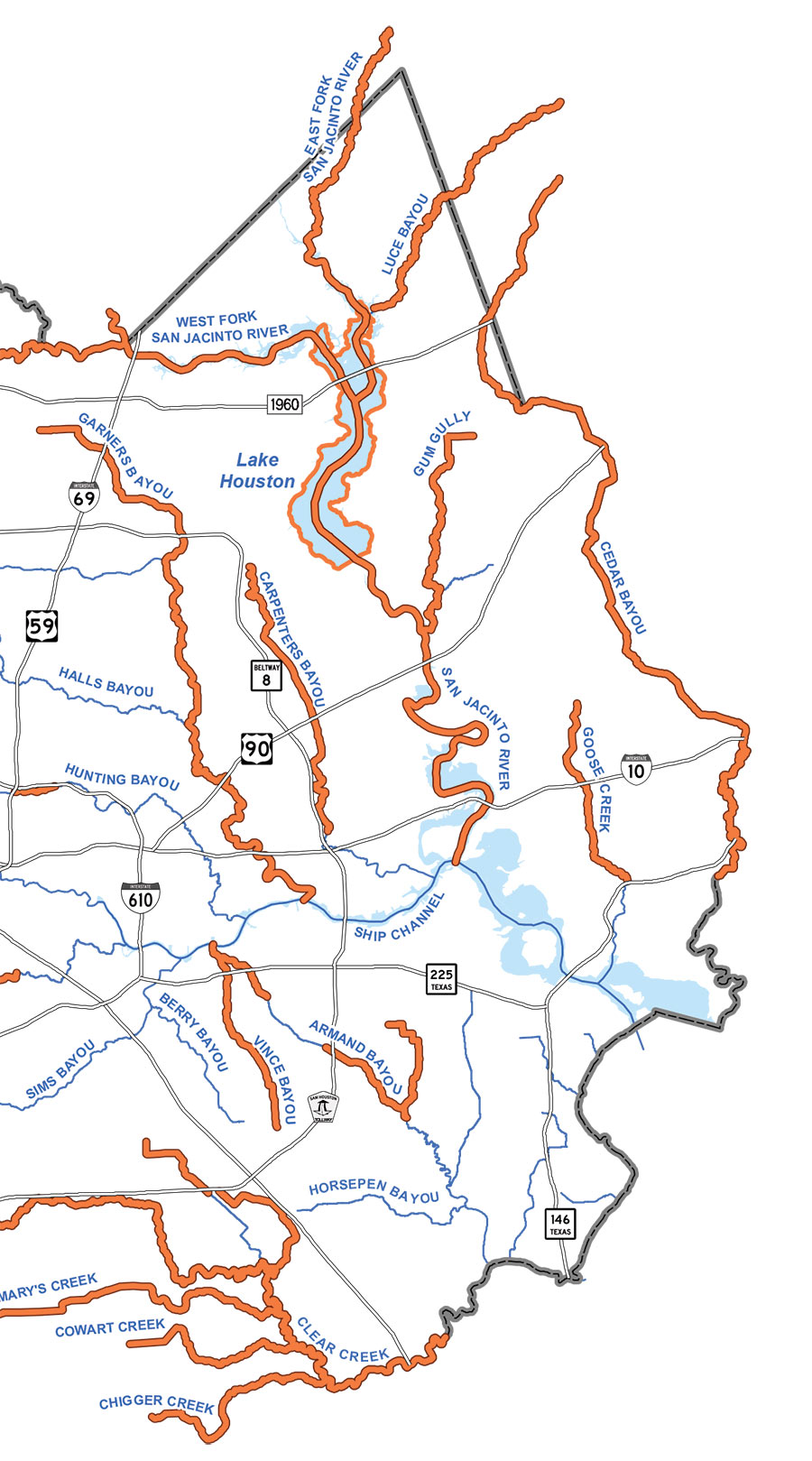
The final page of the Harris County Flood Control District’s final report on Hurricane Harvey includes the map above, with orange indicating where bayous, rivers, creeks, and gullies set new high water marks between August 25 and 29. Aside from Sims Bayou and a handful of smaller waterways, every other liquid landmark in the county outdid itself along some portion during the storm. Several — such as Cypress Creek and Carpenters Bayou (shown in detail above) — set new flood records along their entire lengths.
Less distinguished are White Oak and Little White Oak bayous, which broke records along only tiny stretches near Buffalo Bayou:


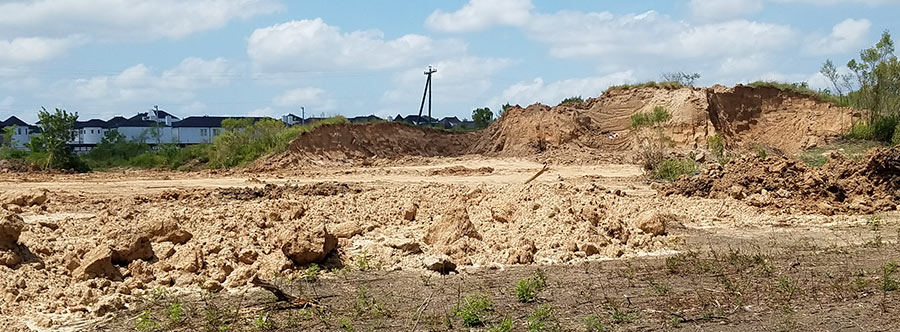
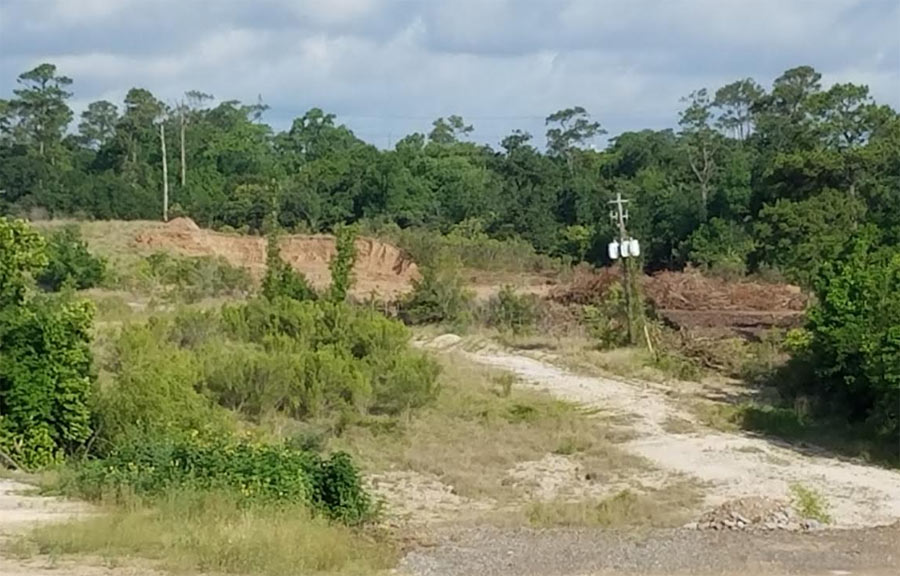
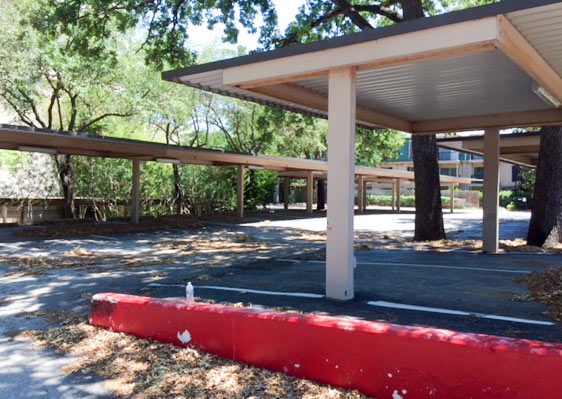
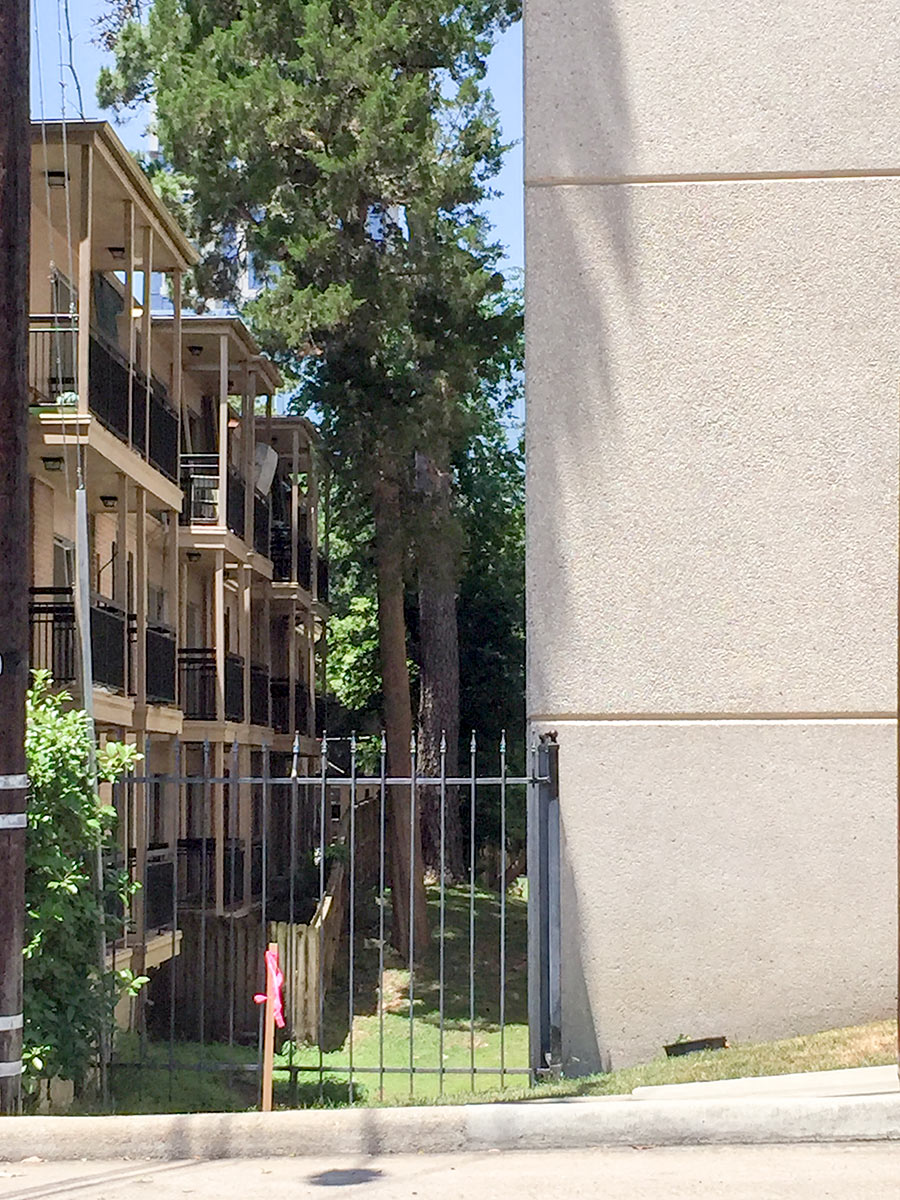
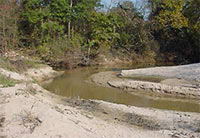 “Make a reservoir or lake north of the city, just west of Humble at the confluence of Spring Creek and Cypress Creek, as well as the San Jacinto River just a bit to the east. This land is still undeveloped. These three major tributaries coming together in short order accentuates the flooding issues. If the water has nowhere to go it’s going to cause flooding. While a reservoir in west Harris County will hold that water back from surging downstream, it does absolutely nothing for the rainfall that falls on the hundreds of square miles of land in the Spring Creek, downstream Cypress Creek and San Jacinto River watersheds. The main intent of the proposed third dam is to keep the water from overflowing into Barker and Addicks. Creating a lake here could serve not only flood control issues, but also provide for another source of drinking water.” [Thomas, commenting on
“Make a reservoir or lake north of the city, just west of Humble at the confluence of Spring Creek and Cypress Creek, as well as the San Jacinto River just a bit to the east. This land is still undeveloped. These three major tributaries coming together in short order accentuates the flooding issues. If the water has nowhere to go it’s going to cause flooding. While a reservoir in west Harris County will hold that water back from surging downstream, it does absolutely nothing for the rainfall that falls on the hundreds of square miles of land in the Spring Creek, downstream Cypress Creek and San Jacinto River watersheds. The main intent of the proposed third dam is to keep the water from overflowing into Barker and Addicks. Creating a lake here could serve not only flood control issues, but also provide for another source of drinking water.” [Thomas, commenting on 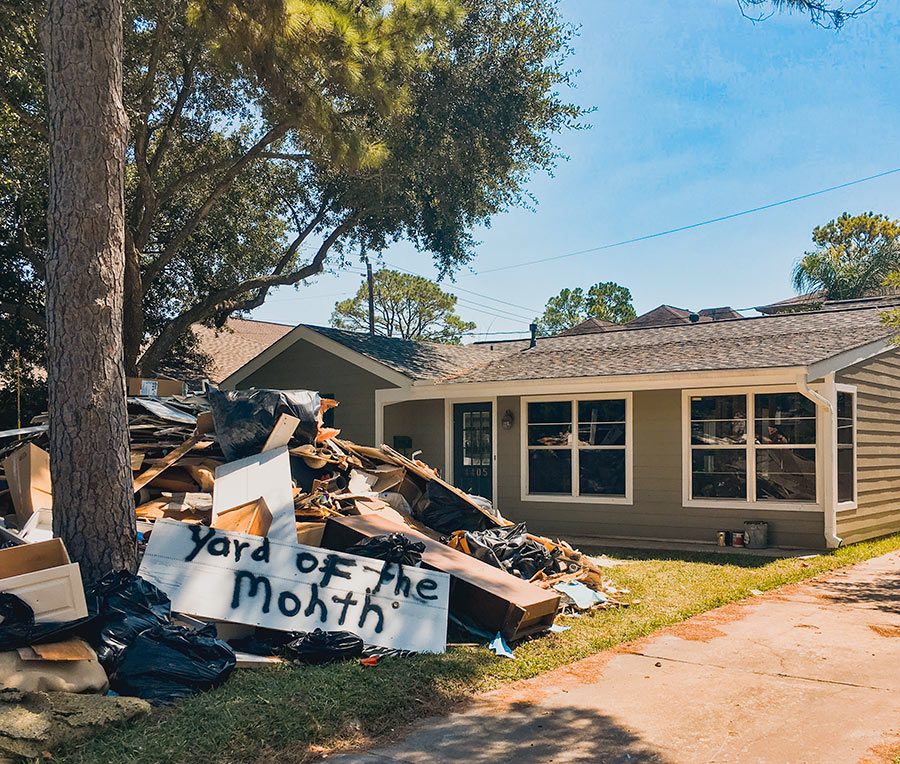 Whether homes flooded by Harvey are sold to investors or not makes a big difference, argue the Chronicle’s David Hunn and Matt Dempsey. For one thing, a sale closes the door to a county buyout — which often takes much longer to complete than a private purchase. Since Harvey, the reporters note, 88 houses Harris County had hoped to buy and demolish have already been snatched up by private parties, often for rehab and rental. Investment firms, by the writers’ count, have bought about 150 Harvey-flooded homes so far.
Whether homes flooded by Harvey are sold to investors or not makes a big difference, argue the Chronicle’s David Hunn and Matt Dempsey. For one thing, a sale closes the door to a county buyout — which often takes much longer to complete than a private purchase. Since Harvey, the reporters note, 88 houses Harris County had hoped to buy and demolish have already been snatched up by private parties, often for rehab and rental. Investment firms, by the writers’ count, have bought about 150 Harvey-flooded homes so far. 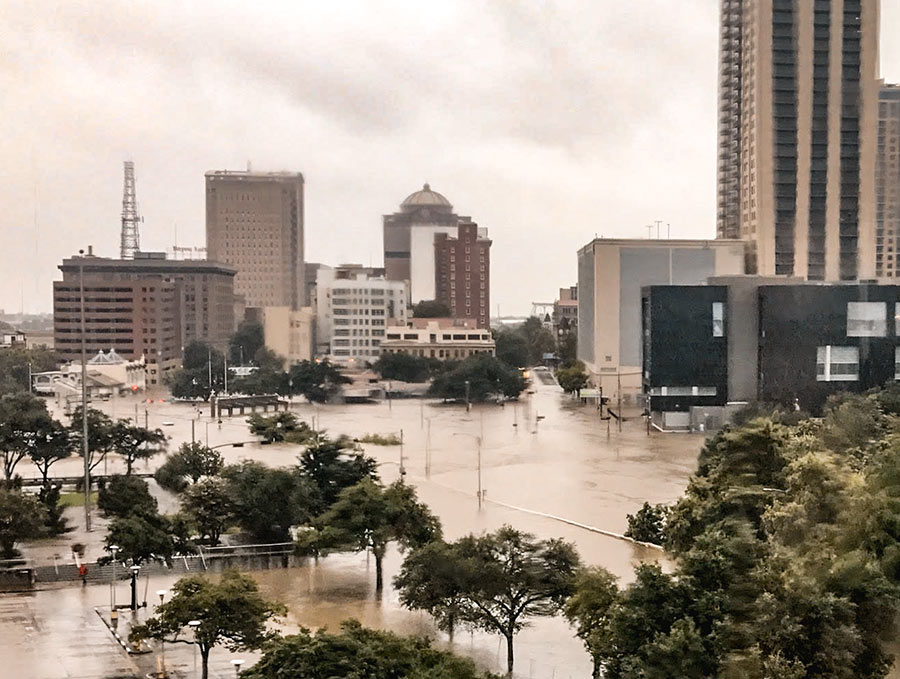 In a letter to the Commissioners Court yesterday, Gov. Abbott approved Harris County’s
In a letter to the Commissioners Court yesterday, Gov. Abbott approved Harris County’s 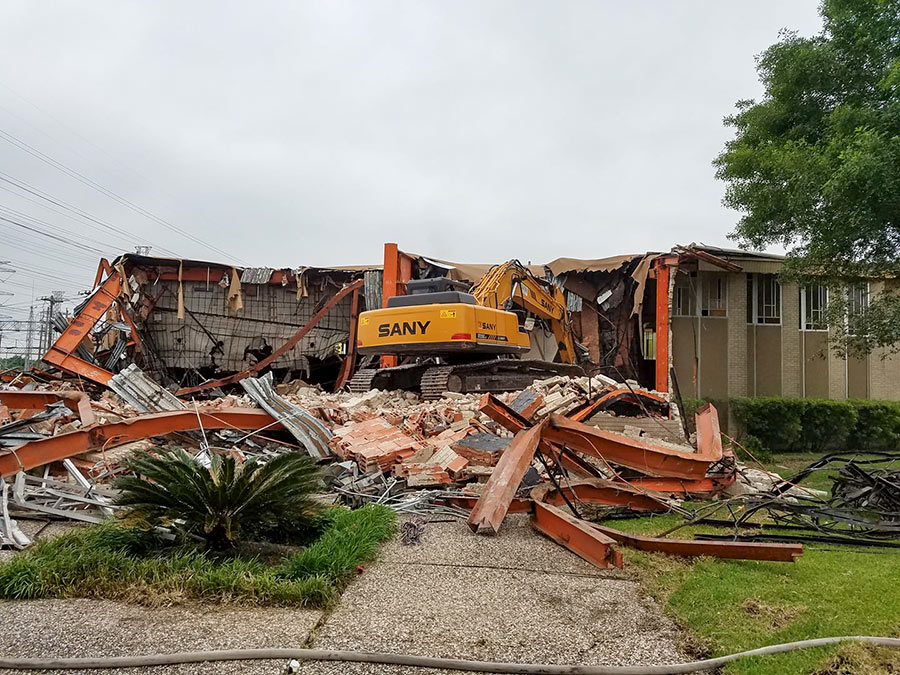 The roughly 820 homeowners in Willow Meadows are now voting on a deed restriction change that — if passed — would allow the United Orthodox Synagogue to build a new structure outside The Loop, in place of 5 houses that sit 3 quarters of a mile south down Greenwillow St. from the congregation’s previous home at the corner of S. Braeswood. Many congregants walk to the synagogue — which could soon be leaving the 100-year floodplain for the 500 after flooding 6 times in the last 25 years, including 3 in the last 3. “According to preliminary renderings,” reports the Jewish Herald Voice’s Michael C. Duke on Studio Red’s proposed design, “
The roughly 820 homeowners in Willow Meadows are now voting on a deed restriction change that — if passed — would allow the United Orthodox Synagogue to build a new structure outside The Loop, in place of 5 houses that sit 3 quarters of a mile south down Greenwillow St. from the congregation’s previous home at the corner of S. Braeswood. Many congregants walk to the synagogue — which could soon be leaving the 100-year floodplain for the 500 after flooding 6 times in the last 25 years, including 3 in the last 3. “According to preliminary renderings,” reports the Jewish Herald Voice’s Michael C. Duke on Studio Red’s proposed design, “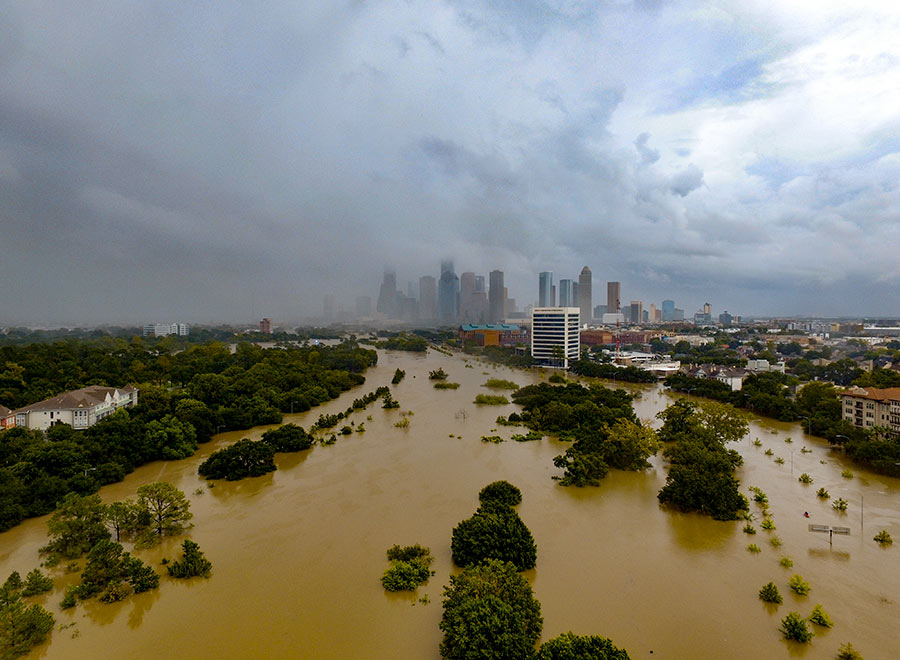 The Harris County Commissioners Court voted this morning to
The Harris County Commissioners Court voted this morning to 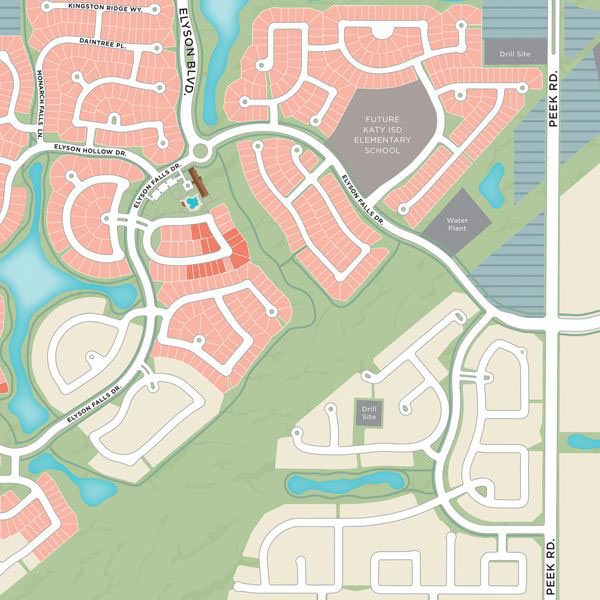 How was developer Newland Communities able to lift the first cohort of 6,200Â planned new homes out of the 100-year floodplain in Elyson, its Katy Prairie development just west of the Grand Pkwy. at FM 529? Easy:
How was developer Newland Communities able to lift the first cohort of 6,200 planned new homes out of the 100-year floodplain in Elyson, its Katy Prairie development just west of the Grand Pkwy. at FM 529? Easy:  “Cities with a ‘home flood rate’ of over 25 percent — like Bellaire — should really consider mandatory green space, meaning some property owners simply cannot rebuild. Tough in the short term but the city can front good money to buy them out . . . because all that park land, trails, fishing, sports fields will pay back multi-fold when these communities are Edens in the midst of a major city.” [
“Cities with a ‘home flood rate’ of over 25 percent — like Bellaire — should really consider mandatory green space, meaning some property owners simply cannot rebuild. Tough in the short term but the city can front good money to buy them out . . . because all that park land, trails, fishing, sports fields will pay back multi-fold when these communities are Edens in the midst of a major city.” [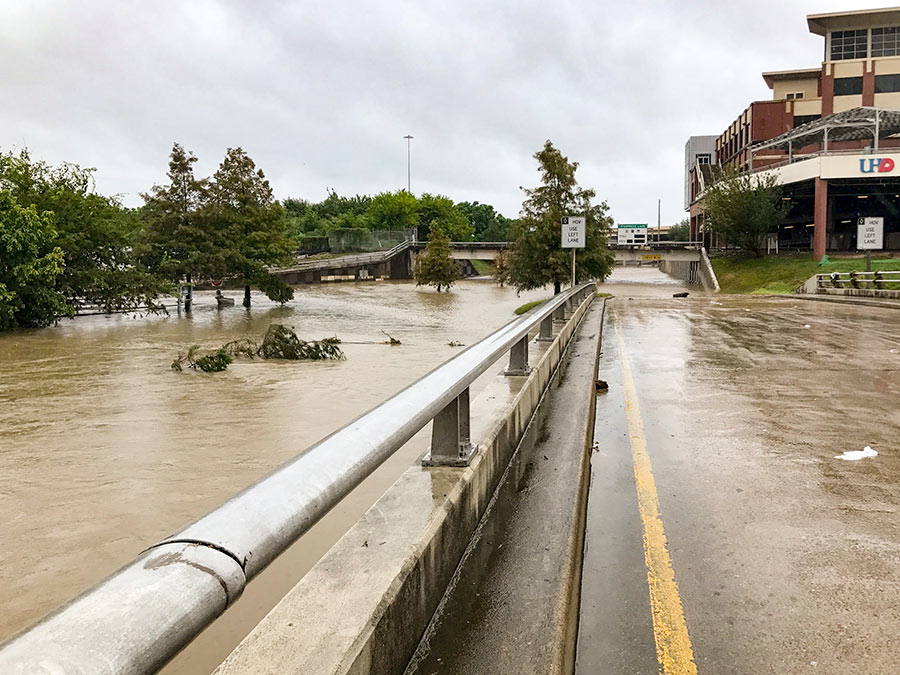 The Harris County Flood Control District is considering digging the nation’s largest network of high-volume tunnels 100 to 200 ft. underground to drain stormwater from several waterways, including — write the Chronicle‘s Mike Morris and Mihir Zaveri — Buffalo Bayou, White Oak Bayou, Hunting Bayou, Greens Bayou, Halls Bayou, Clear Creek, and Cypress Creek. “The goal under the plan,” they report, “
The Harris County Flood Control District is considering digging the nation’s largest network of high-volume tunnels 100 to 200 ft. underground to drain stormwater from several waterways, including — write the Chronicle‘s Mike Morris and Mihir Zaveri — Buffalo Bayou, White Oak Bayou, Hunting Bayou, Greens Bayou, Halls Bayou, Clear Creek, and Cypress Creek. “The goal under the plan,” they report, “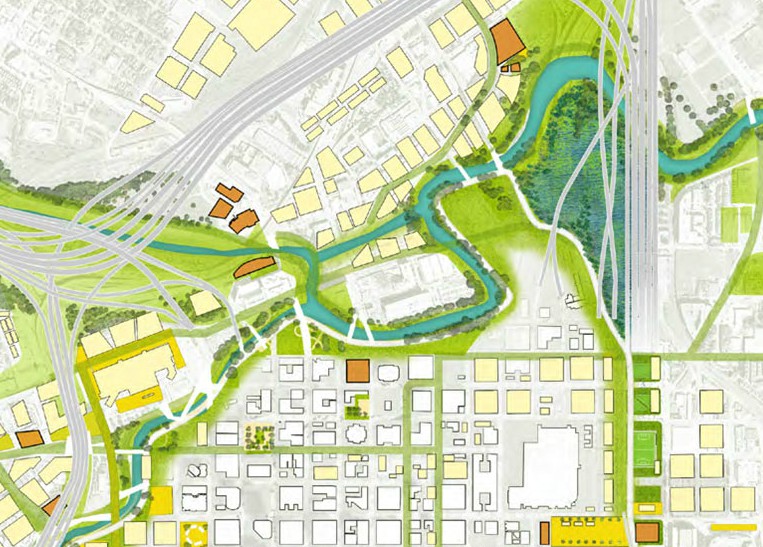 Houston’s flood czar Steve Costello tells the Chronicle’s Mike Morris that
Houston’s flood czar Steve Costello tells the Chronicle’s Mike Morris that 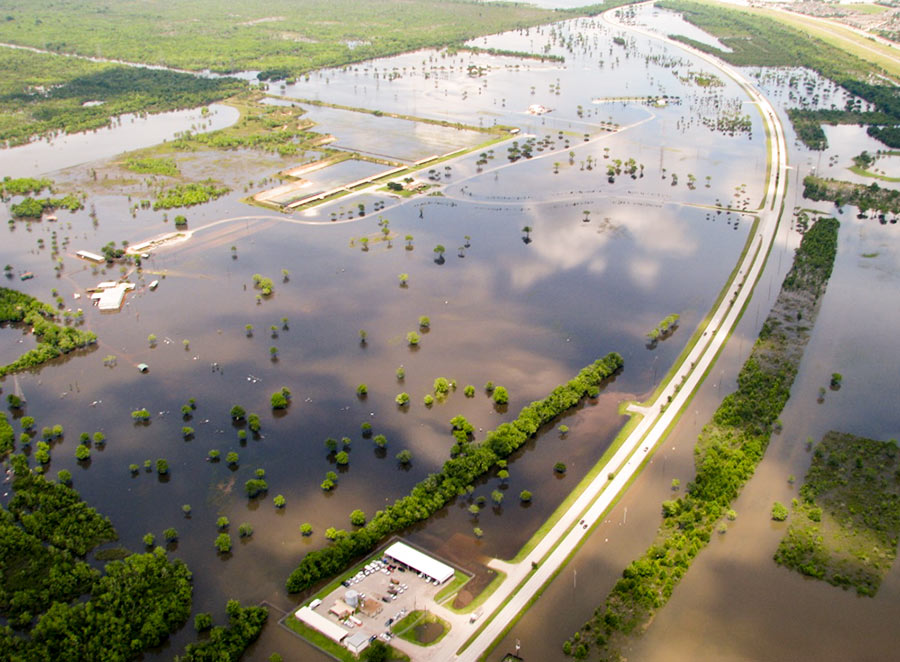 The Army Corps of Engineers is
The Army Corps of Engineers is 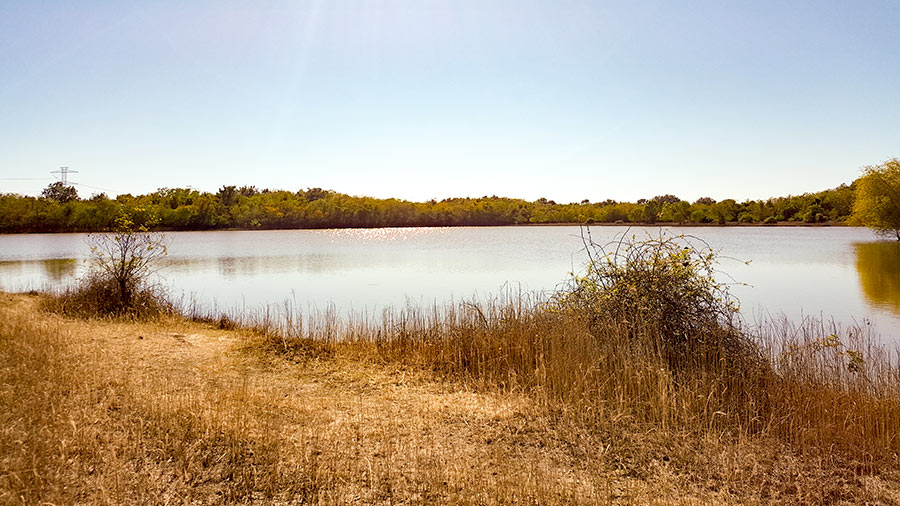 A 1995 Army Corps of Engineers memo obtained by the Chronicle shows that the agency considered the possibility that dozens of lawsuits could be filed against it by flooded homeowners both upstream and downstream from the Addicks and Barker dams. “
A 1995 Army Corps of Engineers memo obtained by the Chronicle shows that the agency considered the possibility that dozens of lawsuits could be filed against it by flooded homeowners both upstream and downstream from the Addicks and Barker dams. “